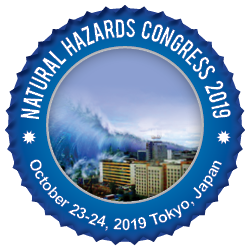
Rajni Hiroshima
University of Tokyo.
Title: Effectiveness of coconut coir utilization in peat soil stabilization
Biography
Biography: Rajni Hiroshima
Abstract
Peat soils can be found in many countries around the world; 2,000km2 through Hokkaido, whereas in Sri Lanka 5% to 10% of land area is covered by peat soil. The process of urbanization has created the need to utilize those areas in construction. However, construction over peaty soils always creates special problems due to their poor engineering properties. Low shear strength is a major problem often causing stability problems in peat soils. In order to prevent such failures, peat ground should be improved using appropriate techniques. Soil reinforcements with natural fibers are highly used successful ground improvement method. Among all-natural fibers, Coconut Coir (CC) has the highest tensile strength and it is highly recommended as a ground improvement. Its high content of lignin (40%) enhances the strength of treated soil. Moreover, this natural fiber is widely available in Sri Lanka. In this study, CC which is made out of coconut husks is used as an additive material for soil stabilization. The main objective of this study is to utilize CC as an environmentally friendly partially replacing material of cement for peat ground improvement. Unconfined Compressive Strength (UCS) of specimens under different CC and OPC contents is compared. DCC shows higher water absorption. During the absorption, coir is able to penetrate to soil mixture and it increases the interaction between soil particles. Higher UCS can be attained using DCC. Water content looks like rely on the rate of hydration by vary OPC composition. UCS of the soil increases significantly with the increase of Coconut Coir content and curing period. Coconut coir can be used for replacing the utilization of cement amount partially for peat ground stabilization. Thus, the lower consumption of cement can contribute to greener earth by reducing the greenhouse gas emissions in construction.

